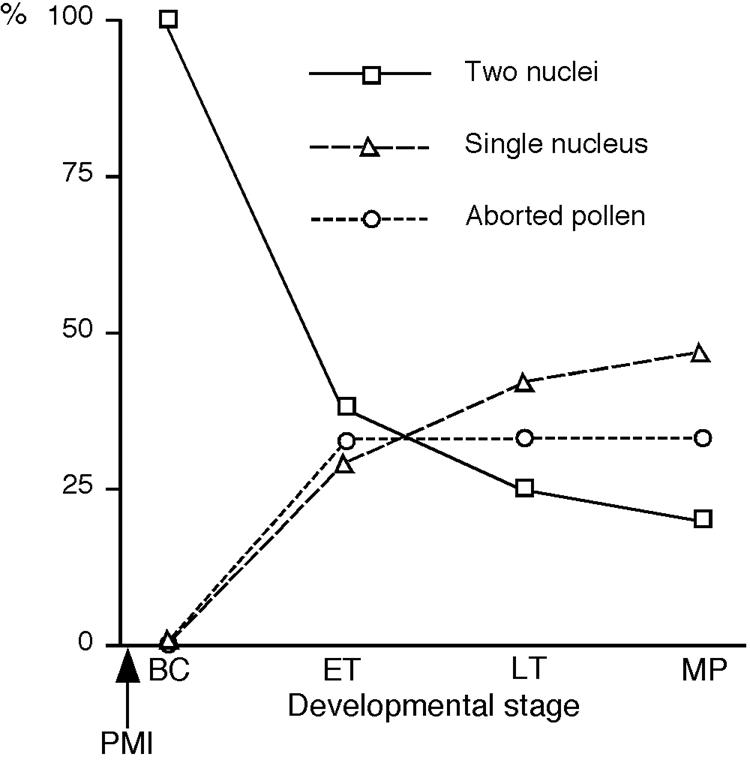Fig. 2.

Summary of developmental analysis of phenotypically abnormal gem2pollen. Each abnormal pollen class is represented as a percentage of the total number of aberrant spores at each developmental stage. At bicellular (BC) pollen stage, all aberrant spores were either binucleate or bicellular, and this percentage decreased gradually during maturation. Uninucleate pollen was first observed at the early tricellular (ET) stage with the percentage increasing at late tricellular (LT) and mature pollen (MP) stages. Aborted pollen started to appear at ET-stage and thereafter the frequency remained constant
